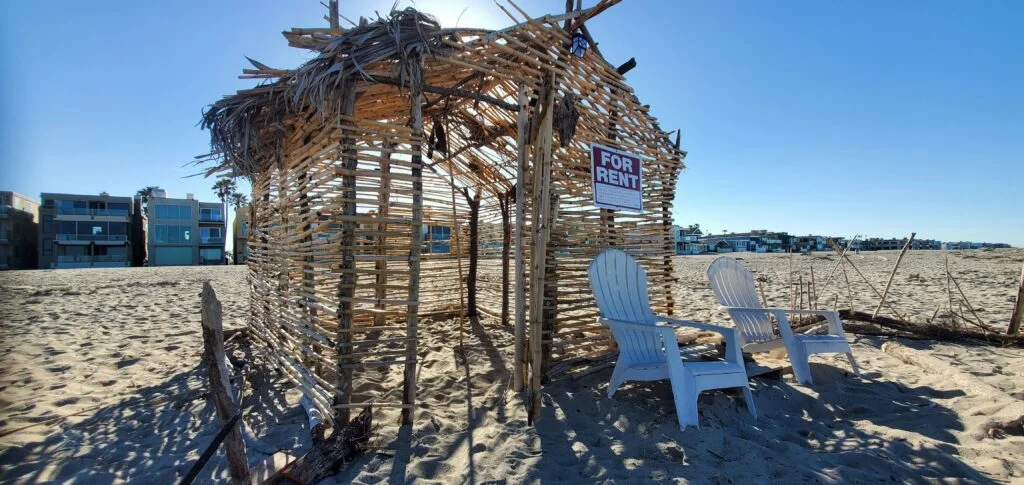What Are Fake Destinations?
Fake destinations refer to locations that are depicted in photographs and videos, yet do not exist in the real world, often created through advanced technological means such as green screens, staged sets, and computer-generated imagery (CGI). These alluring yet fictitious locales have gained immense popularity among influencers and social media users, as they provide an opportunity to curate visually striking content that captivates their audience’s attention. The artistry behind these fabricated environments often blurs the line between reality and imagination, leading viewers to believe they are witnessing an authentic travel experience.
One notable example of a fake destination is the “Wanderlust Island,” a popular backdrop for influencers known for its breathtaking beaches and vibrant sunsets. However, it was later revealed to be a composite of various elements pieced together digitally. Similarly, the “Dreamscape City” has been shown to entice followers with its artistically staged streets and surreal architecture, all of which are the results of creative sets and digital manipulation rather than genuine infrastructure. Such creations leverage the power of visual storytelling, catering to the desire for picturesque escapes that resonate with the wanderlust feeling, yet they can leave viewers questioning the authenticity of travel content.
The appeal of fake destinations lies not only in their aesthetic value but also in their ability to create an enticing narrative around idealized travel experiences. Influencers often promote these locations as secret getaways or exclusive spots, enhancing their allure and driving engagement. Despite the fact that they lack the genuine cultural richness and experiences that authentic travel provides, they continue to charm audiences by offering a glimpse into an idealized world. Such trends raise questions about authenticity in the travel industry, prompting discussions around the implications of showcasing fabricated experiences as real ones.
How Influencers Get Away with It
The world of social media has transformed the landscape of travel content, and influencers have adeptly leveraged this change to craft an illusion of authenticity. One of the primary strategies used by influencers to maintain the façade of visiting fake travel destinations involves advanced photo editing techniques. With the assistance of applications and software that enhance colors, remove imperfections, and manipulate backgrounds, influencers create visually striking images that captivate their audiences. Such digital enhancements enable them to present idyllic settings that may not exist in reality, thereby drawing followers into a dreamlike experience that feels real yet is entirely fabricated.
Alongside editing tricks, the emergence of ‘rent-a-vacation’ companies has played a pivotal role in facilitating influencers’ ability to curate their adventures. These companies provide staged environments that mimic various travel locations, often designed with aesthetic appeal in mind. By renting out these purposefully constructed backdrops, influencers can easily forge content that appears spontaneous and authentic while being carefully orchestrated. This practice raises questions about the authenticity of social media content, as audiences may be unaware that their favorite influencers are, in fact, showcasing curated experiences rather than genuine travels.
Furthermore, influencers utilize strategic storytelling to bridge the gap between their fabricated environments and their followers’ perception of reality. By accompanying their curated images with engaging narratives about their “experiences,” they enhance the believability of their staged scenarios. These narratives often include anecdotes, local customs, and travel tips, further convincing viewers of their legitimacy. As the illusion continues to evolve, it becomes increasingly apparent that the line between reality and fabrication is blurred, leaving audiences questioning the authenticity of the travel content they consume. This phenomenon exemplifies how influencers successfully maintain the allure of travel through calculated strategies, enabling them to captivate and expand their online audiences.
Behind the Illusion
The rise of social media influencers has given birth to a phenomenon where perceived travel experiences often overshadow reality. These digital nomads cleverly curate their lives to appear idyllic and adventurous, crafting an illusion that resonates deeply with their audience. But behind these curated images lies a complex web of motivations and profitability. Many influencers harness the allure of travel to sell a lifestyle that may not accurately reflect their true experiences.
One of the primary motivations for creating fake travel content is the potential for significant financial gain. Many influencers partner with brands seeking to capitalize on their follower reach. By showcasing luxurious destinations and glamorous experiences, influencers not only attract followers but also entice sponsors. This creates a mutually beneficial relationship where influencers can receive compensation, free products, or other incentives in return for their promotion of a particular brand or destination. However, this often leads to an exaggerated depiction of their travels, blurring the lines between genuine adventure and paid advertisement.
Furthermore, there is a psychological aspect contributing to the allure of fake travel content. Followers often desire an escape from their daily lives, and influencers exploit this by projecting a lifestyle filled with exotic locales and thrilling experiences. This desire for escapism not only drives engagement but also fosters an environment in which individuals are more likely to consume and share this content, believing in the authenticity of these portrayals. Hence, the perceived closeness to these influencers creates a disconnect between their actual, mundane realities and the fantastical narrative they propagate.
In this context, it is vital for followers to remain discerning consumers of content. Understanding the commercial intent and motivations behind these fabricated experiences can significantly alter one’s perception of influencer lifestyles. This awareness allows audiences to appreciate the art of storytelling in travel while also questioning the validity of the crafted personas they encounter daily.
Should We Be Mad or Impressed?
The rise of social media influencers has undeniably altered perceptions of travel and exploration. As their curated feeds showcase idyllic beaches, bustling markets, and serene landscapes, one cannot help but admire the creativity and artistry behind these glamorous portrayals of adventure. However, lurking behind the beautifully edited images lies a complex ethical dilemma regarding authenticity and transparency in the representation of travel experiences. Should audiences be enraged by perceived deception, or should they recognize this endeavor as a compelling form of artistic expression?
At the heart of this debate is the conflict between genuine travel experiences and the socially constructed narratives that influencers present. On one hand, audiences may feel misled when they discover that a picturesque backdrop is not a spontaneous escape but rather a carefully orchestrated photoshoot in a lesser-known location. This revelation can foster feelings of betrayal as followers, often dreaming of parallel adventures, confront the stark contrast between reality and these curated experiences. Conversely, one could argue that the imaginative flair of influencers invites their audience to explore beyond simple travel. It encourages new forms of creativity, inspiring individuals to dream and consider unique travel possibilities they may not have contemplated otherwise.
<pmoreover, a="" age="" allowing="" allure="" an="" and="" anger="" artistry="" audiences="" authenticity="" authenticity.="" becoming="" behind="" between="" blurred="" boundaries="" can="" challenge="" constitutes="" content="" conventional="" could="" curated="" definitions="" disappointment,="" distinction="" embrace="" essential="" experiences.="" fabrication="" fake="" feelings="" fixated="" for="" highlights="" hyper-idealized="" in="" influencers’="" life="" lifestyles,="" media.="" media.
The Impact on Travel Culture
The rise of fake travel destinations, often popularized by social media influencers, has notably shifted the dynamics of travel culture in contemporary society. Today’s travelers are frequently bombarded with images of picturesque sites that are, in fact, fabricated or heavily edited. This trend has cultivated an unrealistic set of expectations regarding travel experiences, leading many individuals to believe that their vacations should mirror the idyllic scenes portrayed online. Consequently, these distorted representations contribute to a paradox where the authentic beauty of actual destinations is overshadowed, leaving travelers dissatisfied when confronted with the mundanity of reality.
Moreover, the allure of these fictitious locales has spurred a wave of consumerism within the travel industry. A growing number of individuals pursue travel opportunities not for genuine exploration or cultural enrichment but rather to curate their own social media narratives. This shift has prompted an increase in demand for beyond-the-norm experiences rather than traditional destinations that offer true cultural significance. As a result, travel agencies and marketers adapt to this changing landscape, often promoting packages and experiences that cater to these inflated expectations rather than emphasizing genuine engagement with different cultures and environments.
Furthermore, the emphasis on visually appealing destinations risks marginalizing authentic spots that have historically provided real cultural and geographical contexts. Local economies may struggle as tourists flock to fabricated attractions, neglecting lesser-known but equally deserving areas that rely on tourism for their livelihood. As travelers gravitate toward the dazzling and artificial representations of travel, the travel culture begins to prioritize superficial experiences over meaningful engagement, ultimately eroding the foundational aspects of genuine tourism. This ongoing phenomenon poses significant challenges but also opportunities for the industry to redefine and promote authentic travel experiences, ensuring that all destinations are given their due recognition.
Fine Line Between Fantasy and Reality
The phenomenon of influencers shaping perceptions of travel through curated content highlights the delicate balance between fantasy and reality in the travel industry. These digital creators often capitalize on visually stunning locales to captivate their audience, yet they face the challenge of maintaining authenticity in their narratives. As travel influencers craft their online personas, the allure of picturesque settings can lead to an inevitable intertwining of fabricated experiences with authentic ones, which poses a risk to their credibility.
Many influencers seek to entice followers through enchanting imagery and compelling storytelling, enhancing the allure of certain destinations—whether they are real or whimsically manipulated. The quest for captivating content may urge influencers to adopt creative techniques, such as using filters or staging scenes, which can lead viewers to believe in an idealized version of reality. This method not only serves to amplify engagement but also fosters a sense of envy among their audience, pushing the boundaries of genuine travel experiences.
In recognizing the importance of authenticity, many influencers strive to integrate genuine aspects of their travels. They juxtapose their beautifully curated content with candid moments that provide deeper context to their journeys. This effort to showcase a more realistic portrayal can enhance audience trust, drawing viewers into the experience while acknowledging its complexities. However, if the boundary between reality and fantasy becomes too blurred, influencers risk alienating their followers who may feel misled.
Ultimately, the challenge lies in how influencers navigate this fine line. Striking a balance between breathtaking content and authentic experiences is crucial, as it informs the trust relationship between the content creator and their audience. As the travel landscape continues to evolve, it remains vital for influencers to manage this dichotomy thoughtfully, ensuring their stories resonate with followers while remaining rooted in genuine adventure.
Case Studies of Influencer Success
In recent years, several influencers have gained significant traction by showcasing fake travel destinations, demonstrating remarkable success in audience engagement and brand development. One of the most prominent examples involves an influencer known for crafting visually stunning content that seemingly transports viewers to dreamlike locations. By utilizing carefully curated backdrops and digital manipulation, this influencer created the illusion of visiting remote islands and enchanted forests that do not exist. The pictures captivated their audience, leading to a substantial increase in followers and heightened brand partnerships with travel-related companies.
Another noteworthy case is that of an adventure influencer who focused on urban scenes but presented these locations as exotic destinations by applying an adventurous narrative. By using generic locations such as city parks and underpasses, combined with clever angles and filters, the influencer transformed mundane settings into alluring landscapes. This strategy resonated deeply with their audience, emphasizing storytelling alongside visual aesthetics. The influencer’s ability to blend creativity with authentic engagement techniques has proven effective, resulting in partnerships with brands that seek authenticity through innovative storytelling.
Both of these cases exemplify how influencers have effectively shaped their brands around the concept of fake travel. Their success highlights that the core elements required for engagement include visual appeal, relatable narratives, and strategic marketing. Additionally, it has become evident that audiences increasingly value creativity and connection over geographical authenticity. The lessons drawn from these influencers advocate for the significance of establishing a unique identity while leveraging the power of visual content. Importantly, these strategies underscore the necessity for influencers to maintain ethical considerations when curating their experiences, considering the potential impact on audience perceptions of travel and adventure.
The Role of Social Media Platforms
Social media platforms have become significant facilitators in shaping the travel narrative, often amplifying the allure of fake travel destinations. With the rise of highly visual platforms such as Instagram and TikTok, influencers are able to share curated content that presents an embellished version of reality. This curation, while visually appealing, can often mislead audiences into believing that these fabricated locations are indeed real travel hotspots. The algorithms employed by these platforms play a crucial role in promoting this type of content, prioritizing posts that attract high engagement levels, such as likes and shares, regardless of their authenticity.
Different social media platforms have distinct audience dynamics and engagement patterns. For example, Instagram thrives on eye-catching imagery, which allows influencers to showcase fake locations through photos that can evoke a sense of wanderlust. TikTok, on the other hand, utilizes short-form video content, which can effectively manipulate perceptions by stitching together captivating visuals with catchy narratives. Through these mechanisms, audiences may unconsciously accept the presented content as genuine travel experiences, thus perpetuating the cycle of misinformation.
Additionally, the responsibility of social media companies in curbing misinformation cannot be overstated. Although many platforms are now implementing guidelines and tools to flag misleading content, the effectiveness of such measures remains under scrutiny. The scalability of influencer marketing is immense, prompting social media platforms to explore partnerships and regulations aimed at fostering transparency. Investigative reports have shown a growing concern about the potential consequences of viral fake travel content, as it can distort user understanding and expectations, ultimately affecting the travel industry at large.
Conclusion: Embracing Creativity in Travel Content
In an era where the allure of fake travel destinations has captured the imagination of social media users, it is essential to acknowledge the creative aspects that drive this phenomenon. Influencers and content creators often design visually striking narratives that charm viewers, stirring a desire to explore the world. However, these curated escapades frequently blur the line between authenticity and artifice. As such, this presents an opportunity for audiences to engage more critically with the travel content they consume.
By appreciating the artistry involved in staged experiences, we begin to recognize the broader spectrum of storytelling in travel. Fake travel destinations may lack geographical authenticity, yet they showcase the power of imagination and creativity, allowing creators to engage their audience in unique ways. This engagement is vital for inspiring wanderlust and promoting the spirit of exploration, albeit sometimes through misleading representations. As consumers of travel content, we should strive to differentiate between genuine experiences and fabricated imagery while still appreciating the artistic qualities that both can offer.
Nonetheless, it is imperative to remain vigilant against the potential risks of being misled. The glorification of inauthentic travel can lead to unrealistic expectations and dissatisfaction with genuine experiences, fostering a culture rooted in comparisons rather than genuine enjoyment. Therefore, developing a discerning mindset when interacting with travel influencers and their adventures is crucial.
Ultimately, embracing the blend of creativity in travel content while cultivating discernment enables us to navigate the digital landscape more effectively. By doing so, we allow ourselves to experience the beauty of both authentic travel and creative storytelling, ensuring that our wanderlust remains grounded in reality while celebrating the imaginative possibilities of our destination fantasies.

It could cover a range of topics related to health, wellness, beauty, personal growth, and social issues, all from the perspective of striving for beauty, intelligence, youthfulness, and impartiality





